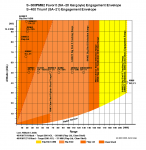Direct Attitude Control Thrusters. You're choosing it because it's cheaper, when has it intercepted a anything outside the atmosphere? A simple demonstration doesn't reveal anything sensitive about the workings.
We don't know anything about the 40N6, while the 48N6 has not been designed with HTK in mind. It has a massive warhead instead.
As for 40N6's exo capability, they have managed to keep it classified, but it's been designed for exo.
It's a big missile.







